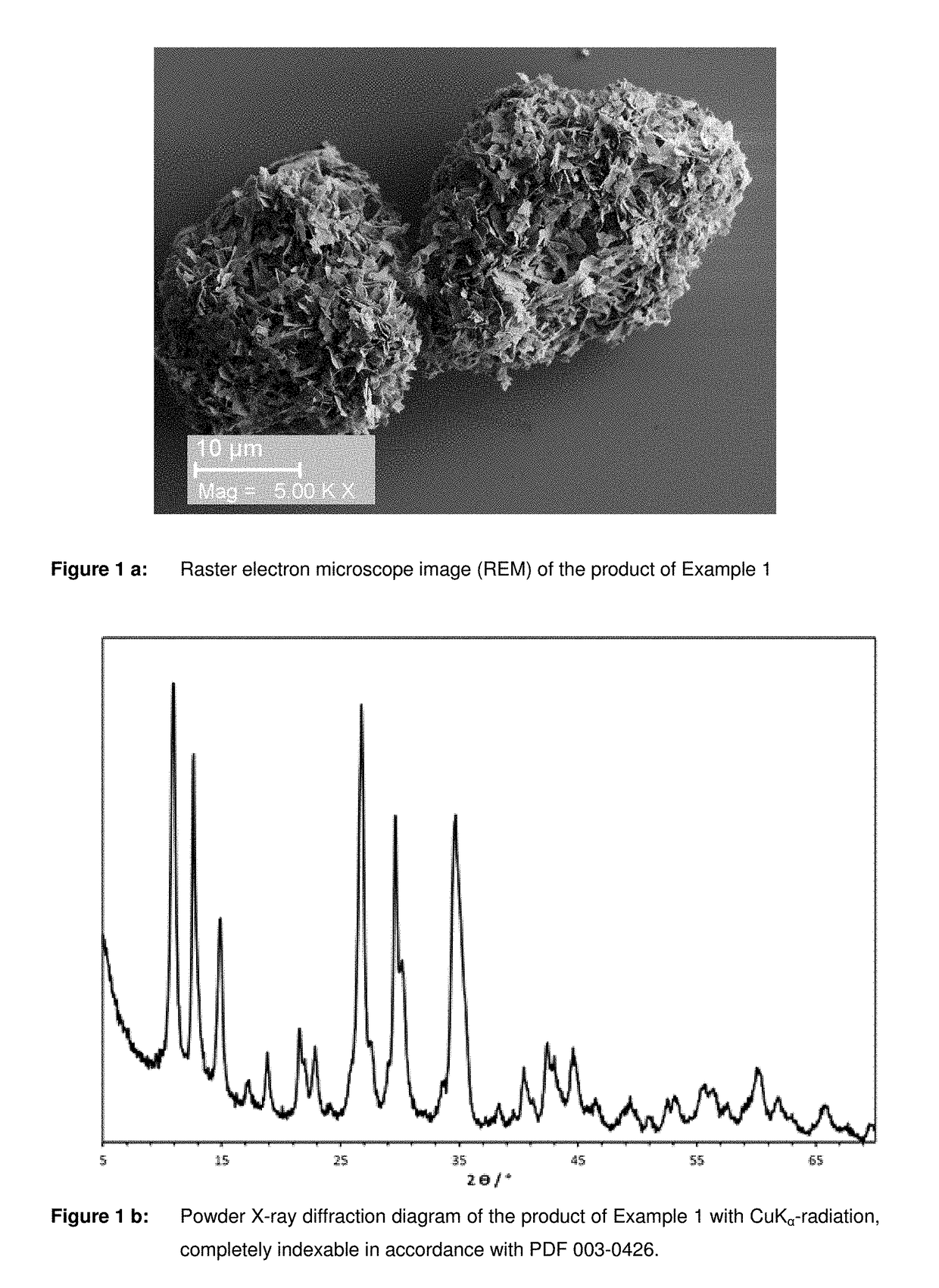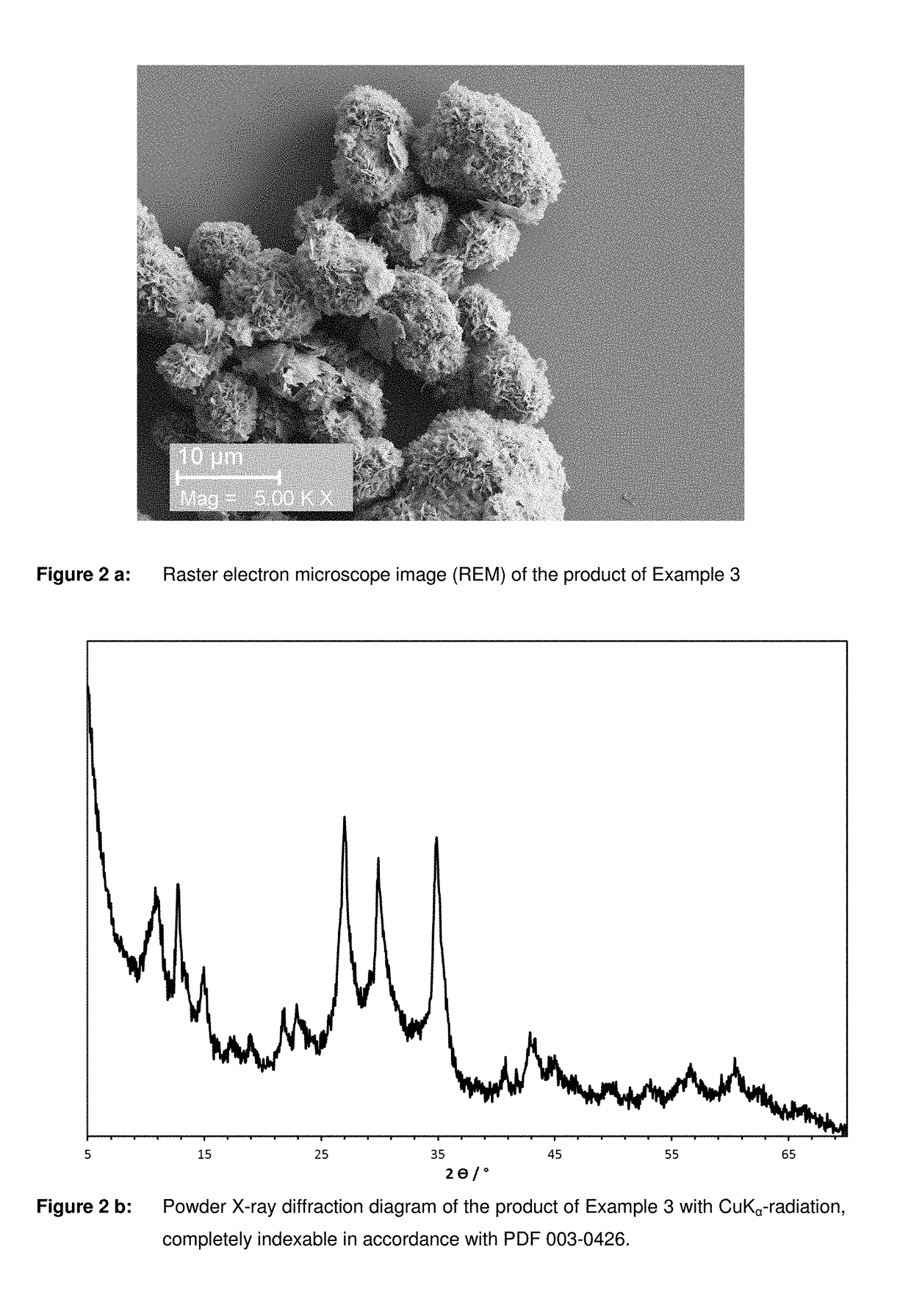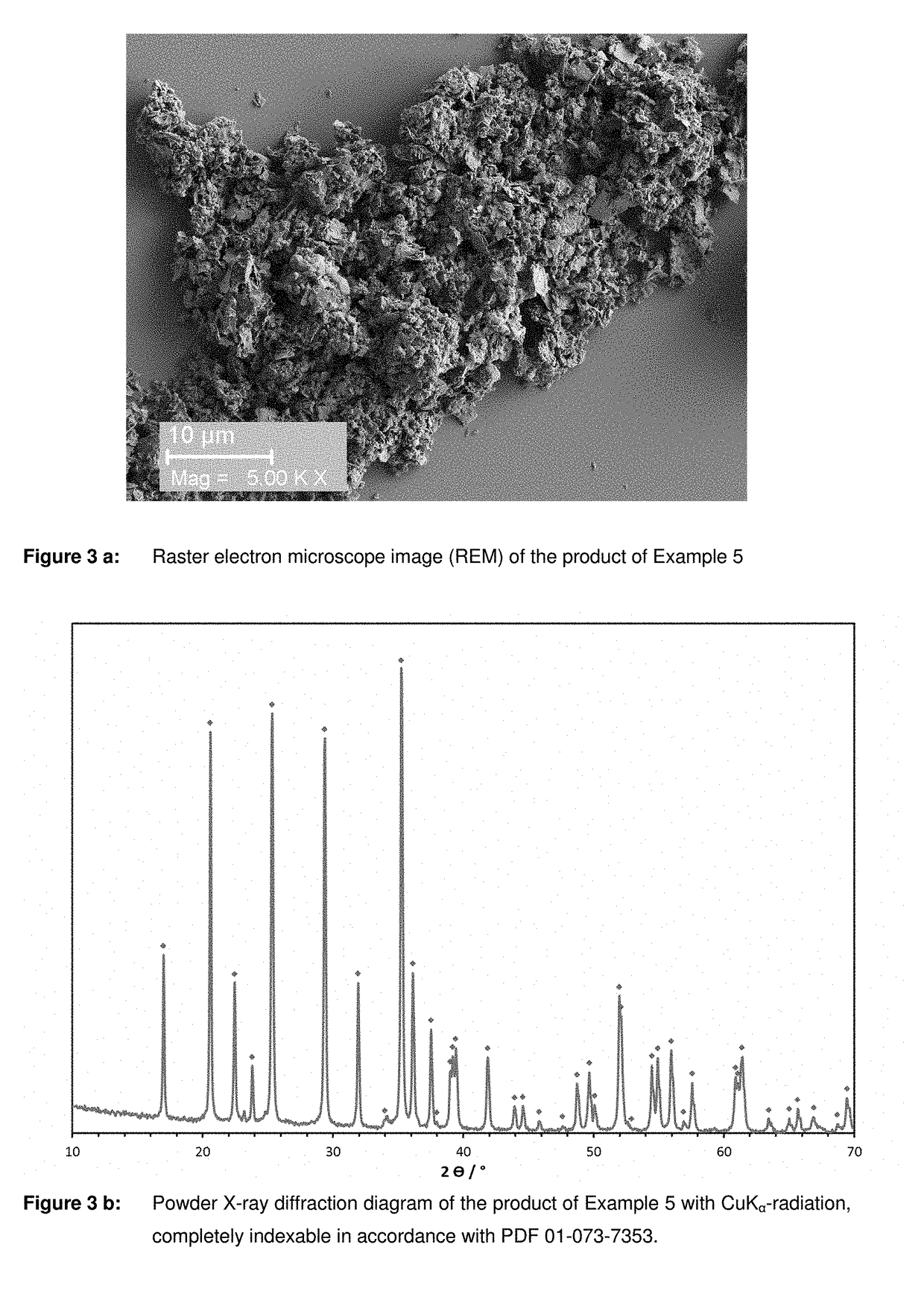Phosphate compounds suitable for the production of cathodes for li-ion batteries
- Summary
- Abstract
- Description
- Claims
- Application Information
AI Technical Summary
Benefits of technology
Problems solved by technology
Method used
Image
Examples
example 1
Production of Mn3(PO4)2.3H2O
[0048]218.8 g of 80% acetic acid was diluted with 781.3 g of deionised water giving 17.5% acetic acid and then mixed with 53 g of elementary. Mn in the form of chips and agitated until a clear solution was produced. Thereafter the solution was filtered to remove suspended substances. The resulting Mn2+ acetate solution was mixed with 55.7 g of a 75% phosphoric acid. A light pink precipitate was formed, which was then separated from the solution by means of a suction Nutsche filter. The precipitate was washed and dried under an air atmosphere for 12 hours at 120° C. The yield was 72.9 g of a dry pink-coloured product. The product was identified by electron microscopic (FIG. 1a) and radiographic (FIG. 1b) investigations as Mn3(PO4)2.3H2O.
example 2
Production of Mn3(PO4)2.3H2O with Recycling of the Carboxylic Acid
[0049]The filtrate from Example 1 was mixed with 37.1 g of elementary Mn in the form of chips and agitated for 2 hours. Similarly to Example 1 the resulting Mn2+ acetate solution was mixed with 55.7 g of a 75% phosphoric acid. A light pink precipitate was again formed, which was then separated from the solution by means of a suction Nutsche filter. The precipitate was washed and dried in an air atmosphere for 12 hours at 120° C. The yield was 72.9 g of a dry pink-coloured product. Similarly to Example 1 the product was identified as Mn3(PO4)2.3H2O.
[0050]Although this Example added less elementary Mn than Example 1 the yield was as great as in Example 1. The reason for this is an excess of Mn2+ ions in the precipitation operation in Example 1 so that Mn2+ ions were still contained in the solution (the filtrate) after separation of the precipitated product. Therefore, in recycling of the filtrate, a smaller amount of Mn...
example 3
Production of (Fe0.25Mn0.75)3(PO4)2.3H2O
[0051]1200 g of 12.5% acetic acid was mixed with 63 g of Mn chips and agitated until a clear solution was produced. After that the solution was filtered to remove suspended substances. Similarly to DE 10 2009 001 204 a phosphoric acid Fe2+ solution with an iron content of 6.2% and a phosphoric acid concentration of 30% was produced from 13 g of Fe2O3 and 8 g of Fe. The phosphoric acid Fe solution was heated to 80° C. and the previously produced Mn acetate solution was slowly added. After addition was completed the reaction solution was boiled for 10 minutes. A yellowish-green precipitate was formed, which was then separated from the solution by means of a suction Nutsche filter. The precipitate was washed and dried in an air atmosphere for 12 hours at 120° C. The yield was 151.2 g of a dry pink-coloured product. The ratio ascertained by means of XRF analysis of Fe:Mn in the sample was 0.3. The product was identified as (Fe0.25Mn0.75)3(PO4)2.3H...
PUM
 Login to View More
Login to View More Abstract
Description
Claims
Application Information
 Login to View More
Login to View More - R&D
- Intellectual Property
- Life Sciences
- Materials
- Tech Scout
- Unparalleled Data Quality
- Higher Quality Content
- 60% Fewer Hallucinations
Browse by: Latest US Patents, China's latest patents, Technical Efficacy Thesaurus, Application Domain, Technology Topic, Popular Technical Reports.
© 2025 PatSnap. All rights reserved.Legal|Privacy policy|Modern Slavery Act Transparency Statement|Sitemap|About US| Contact US: help@patsnap.com



